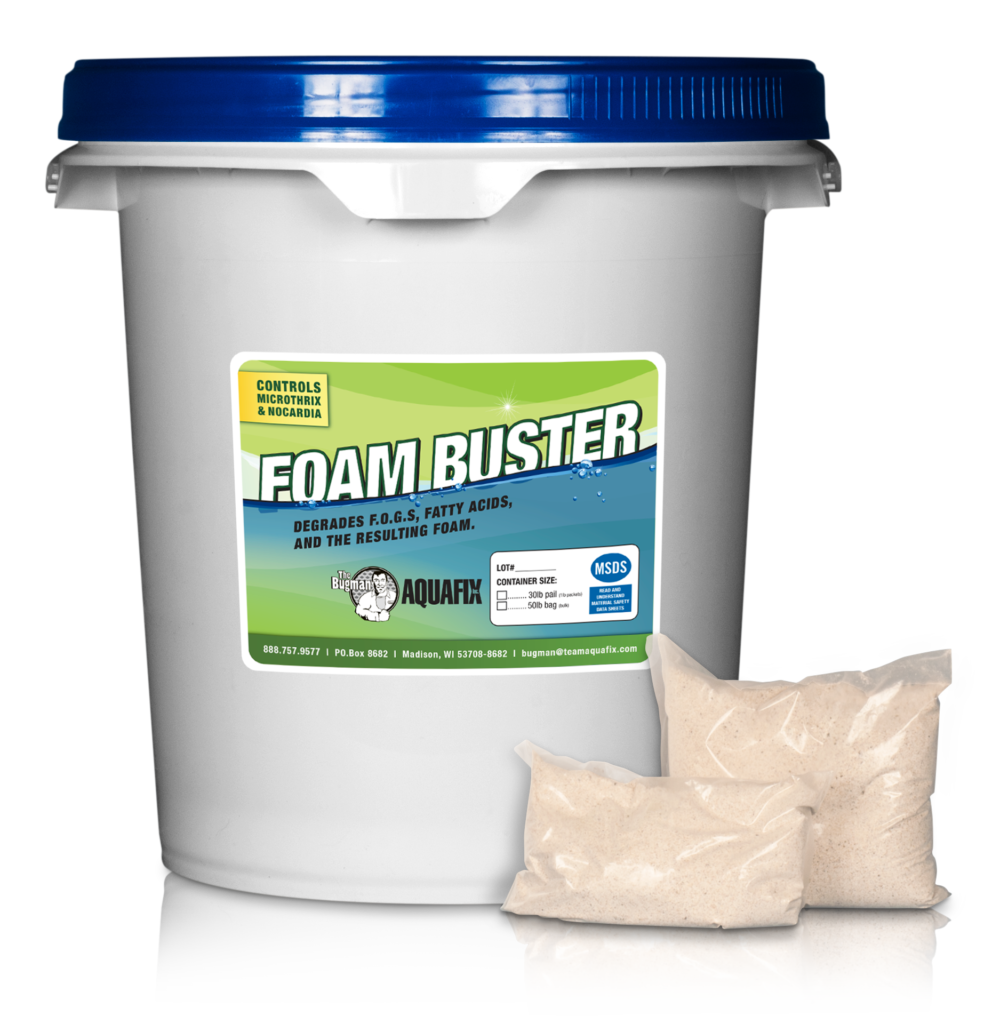Foam Buster – For Foaming Filaments
You can reduce foam in wastewater facilities. When grease, emulsions and petroleum hydrocarbons have created a feast for foam causing filaments in your process, reach for Foam Buster. Microthrix parvicella, Nocardia and Gordonia amare thrive and outcompete your good bacteria when they have abundant nutrient sources, creating fatty acid by-products and a buoyant fatty cell wall (visible foam). The solution is two-fold: stimulate floc-forming bacteria to degrade the food source and enable bacteria to outcompete the foam-causing filaments.

Science
How and Why is Foam Buster Different?
Chemical or silicone anti-foamers don’t address the root cause of your foaming problem. Chemical defoamers can immediately provide a “band-aid” and cover up a foaming challenge, but can also cause side-effects, including nitrifier toxicity and unwanted sludge bulking. Additionally, chemical defoamers do not effectively control surfactant foams or address Nocardia.
Foam Buster works with key characteristics of the bacteria in your wastewater plant to address the root causes of foam. Underperforming bacteria in your plant are boosted with Foam Buster’s micronutrient blend, which speeds up the filament degrading process. The good bacteria is further supported with specific micronutrients to encourage bacteria to produce biocatalysts that attack various types of grease molecules, like bacon grease and butter, in addition to filaments. The result: you reduce foam in wastewater.
Your settling issues are addressed via the third component of Foam Buster: a carefully chosen blend of minerals, surface-tension depressants and buffering systems that address settling issues. This is achieved by reducing FOGs, fatty acids, surfactants and hard to address emulsion chemistries.
How do I apply Foam Buster in My System?
Foam Buster can be applied in extended aeration wastewater treatment plants, aerobic digesters, and systems with similar characteristics.
Solution
Foam control
Applications
Municipal wastewater
Industrial wastewater (with grease accumulation)
Systems
Activated sludge plants
Extended aeration wastewater treatment plants
Aerobic digesters
Oxidation ditches


